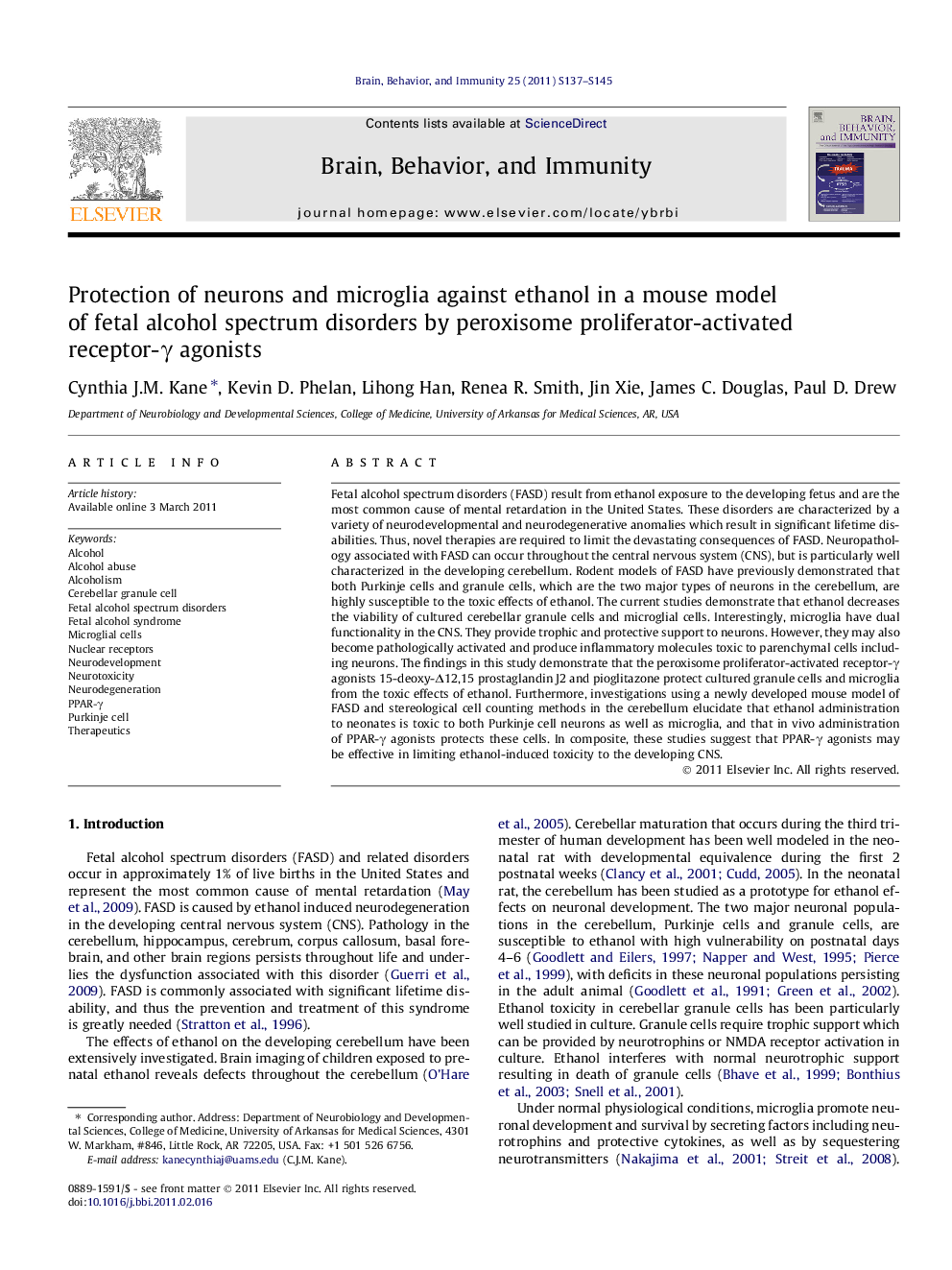| Article ID | Journal | Published Year | Pages | File Type |
|---|---|---|---|---|
| 922399 | Brain, Behavior, and Immunity | 2011 | 9 Pages |
Fetal alcohol spectrum disorders (FASD) result from ethanol exposure to the developing fetus and are the most common cause of mental retardation in the United States. These disorders are characterized by a variety of neurodevelopmental and neurodegenerative anomalies which result in significant lifetime disabilities. Thus, novel therapies are required to limit the devastating consequences of FASD. Neuropathology associated with FASD can occur throughout the central nervous system (CNS), but is particularly well characterized in the developing cerebellum. Rodent models of FASD have previously demonstrated that both Purkinje cells and granule cells, which are the two major types of neurons in the cerebellum, are highly susceptible to the toxic effects of ethanol. The current studies demonstrate that ethanol decreases the viability of cultured cerebellar granule cells and microglial cells. Interestingly, microglia have dual functionality in the CNS. They provide trophic and protective support to neurons. However, they may also become pathologically activated and produce inflammatory molecules toxic to parenchymal cells including neurons. The findings in this study demonstrate that the peroxisome proliferator-activated receptor-γ agonists 15-deoxy-Δ12,15 prostaglandin J2 and pioglitazone protect cultured granule cells and microglia from the toxic effects of ethanol. Furthermore, investigations using a newly developed mouse model of FASD and stereological cell counting methods in the cerebellum elucidate that ethanol administration to neonates is toxic to both Purkinje cell neurons as well as microglia, and that in vivo administration of PPAR-γ agonists protects these cells. In composite, these studies suggest that PPAR-γ agonists may be effective in limiting ethanol-induced toxicity to the developing CNS.
Highlight► We demonstrate that PPAR-γ agonists protect neurons and microglia from ethanol induced neuropathology in primary cultures and in a novel in vivo mouse model of FASD.
